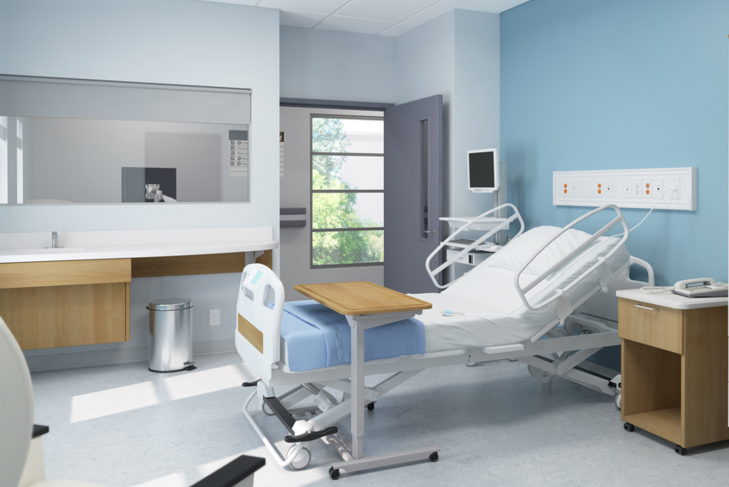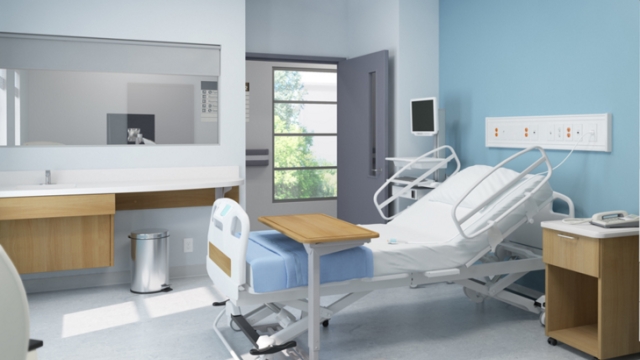Revolutionizing Comfort: The Future of Healthcare Furniture
Introducing a paradigm shift in the world of healthcare, the future of healthcare furniture is poised to revolutionize the way patients experience comfort and care. Gone are the days of sterile and impersonal environments, as designers and manufacturers are now focused on creating spaces that enhance healing and well-being. The significance of healthcare furniture cannot be understated, as it has a profound impact on patient satisfaction, staff efficiency, and overall treatment outcomes.
In this age of advanced technology and evidence-based design, healthcare furniture is undergoing a transformation. Incorporating cutting-edge materials, ergonomic principles, and thoughtful design features, these pieces are carefully crafted to promote comfort, safety, and accessibility. From adjustable beds that cater to individual patient needs to recliners that facilitate relaxation and mobility, the future of healthcare furniture is rooted in maximizing comfort and functionality.
Furthermore, the integration of advanced technologies has the potential to further enhance the patient experience. With features like built-in sensors for monitoring vital signs, wireless charging capabilities, and interactive touchscreens for entertainment and communication, healthcare furniture is becoming increasingly intelligent and customizable. The use of smart materials that resist bacterial growth and can be easily sanitized also ensures that hygiene is prioritized, reducing the risk of healthcare-associated infections.
The future of healthcare furniture holds immense promise, not only for patients but also for healthcare providers. By creating environments that foster healing, these innovative pieces contribute to improved patient outcomes and satisfaction. Moreover, the ergonomic design focuses on enhancing the well-being of healthcare professionals, ensuring that they can provide optimized care without compromising their own comfort. As we embark on this revolutionary journey, embracing the potential of healthcare furniture becomes imperative in forging the path towards a reimagined, patient-centered future.
Importance of Comfort in Healthcare Settings
The comfort provided by healthcare furniture plays a crucial role in enhancing the overall experience of patients and healthcare providers alike. When it comes to healthcare settings, prioritizing comfort is not just a luxury but a necessity. Comfortable furniture in hospitals, clinics, and other medical facilities helps create a soothing and welcoming environment for patients, which aids in their healing process.
In healthcare settings, patients often experience anxiety, stress, and physical discomfort. By investing in comfortable furniture, such as ergonomically designed chairs and beds, healthcare providers can help alleviate some of these discomforts. Comfortable seating options not only promote relaxation but also reduce the risk of pressure ulcers and musculoskeletal problems for patients who may have to spend extended periods sitting or lying down.
Healthcare professionals also benefit from the importance placed on comfort in healthcare furniture. Doctors, nurses, and other healthcare providers often have demanding jobs that require them to work long hours, sometimes standing or sitting for extended periods. Ergonomic furniture supports their well-being and productivity by reducing physical strain and fatigue. Comfortable furniture for healthcare professionals can also contribute to a more positive work environment, enhancing job satisfaction and overall morale.
In conclusion, the significance of comfort in healthcare settings cannot be overstated. By prioritizing comfortable furniture, healthcare facilities create an environment that promotes healing, reduces patient discomfort, and supports the well-being of healthcare professionals. Revolutionizing healthcare furniture to enhance comfort will undoubtedly have a significant impact on the future of healthcare settings.
2. Current Challenges in Healthcare Furniture Design
Healthcare furniture plays an integral role in the comfort and well-being of patients, doctors, and caregivers. As the healthcare industry continues to evolve, so do the challenges in designing furniture that meets the diverse needs of the healthcare environment.
The first challenge revolves around functionality. Healthcare furniture must be designed to cater to the unique requirements of medical spaces, such as hospitals, clinics, and long-term care facilities. It needs to provide support, convenience, and accessibility for patients, medical professionals, and visitors alike. Striking a balance between functionality and aesthetics is crucial to ensure that furniture is both practical and visually appealing.
Another challenge lies in infection control. In healthcare settings, preventing the spread of infections is of utmost importance. Furniture needs to be designed with materials that are easy to clean and disinfect without compromising on comfort. Additionally, incorporating features like antimicrobial surfaces and seamless construction can further enhance infection control measures.
Lastly, adaptability is a significant challenge in healthcare furniture design. Medical spaces often need to accommodate various activities and equipment, requiring furniture that can be easily adjusted or reconfigured. From patient beds that can be transformed into chairs for examinations to modular seating arrangements that can be rearranged quickly, creating versatile furniture solutions can greatly improve the overall functionality of healthcare spaces.
To overcome these challenges, designers and manufacturers are increasingly focusing on research and innovation in healthcare furniture design. By collaborating with healthcare professionals and incorporating user feedback, they can create furniture that not only meets the unique demands of the healthcare industry but also enhances patient care and comfort.
###3. Advancements and Innovations in the Future of Healthcare Furniture
The future of healthcare furniture is set to witness remarkable advancements and exciting innovations. With a focus on enhancing patient comfort, improving healthcare outcomes, and optimizing the workflow of medical professionals, the industry is rapidly evolving to meet the ever-changing needs of modern healthcare facilities.
-
Ergonomic Design and Customization:
Healthcare furniture of the future will place a strong emphasis on ergonomic design principles, ensuring optimal support and comfort for patients. The ability to customize furniture to meet individual patient requirements will become increasingly prevalent, allowing for personalized care experiences. From adjustable beds and chairs to adaptable exam tables, healthcare furniture will be designed to cater to the unique needs of patients, promoting their well-being and aiding in their recovery. -
Integrated Technology:
Technology integration will play a vital role in revolutionizing healthcare furniture. Smart beds and seating solutions will be equipped with sensors to monitor vital signs, patient movements, and provide important data to healthcare professionals. This real-time information will enable healthcare providers to deliver more proactive and personalized care, while also enhancing patient safety and well-being. -
Infection Control and Cleanability:
In the future, healthcare furniture will be developed with a strong focus on infection control and cleanability. Antimicrobial materials and coatings will be incorporated into the design, inhibiting the growth of harmful bacteria and pathogens. Additionally, furniture surfaces will be designed to be easily cleaned and disinfected, reducing the risk of healthcare-associated infections and ensuring a safe and hygienic environment for both patients and medical staff.
The future of healthcare furniture promises exciting advancements aimed at improving patient comfort, enhancing healthcare outcomes, and streamlining medical workflows. Through ergonomic design, technology integration, and infection control measures, healthcare facilities will be equipped with furniture that supports the well-being of patients and enables healthcare professionals to deliver the highest standard of care.

